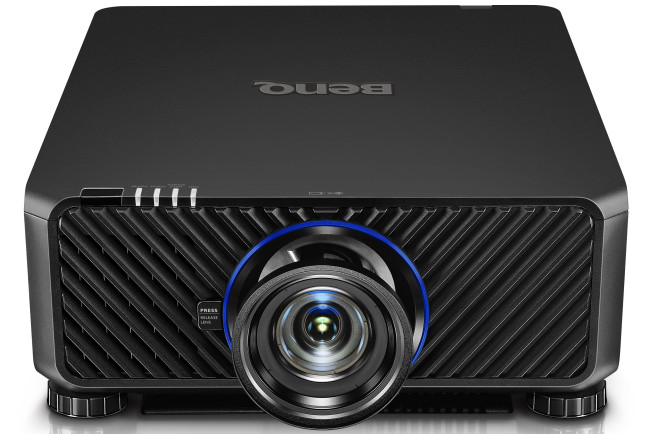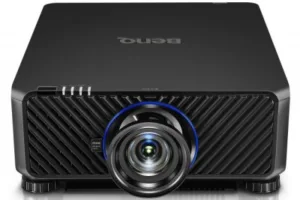BenQ showed us a new laser phosphor projector, the LU9235 which is a 1920 x 1200 resolution DLP projector with 6,000 Ansi lumens of output and a promised light source lifetime of 20K hours. Features include 3G-SDI and HDBaseT connectivity as well as embedded edge blending and warping. A range of seven lenses is available now, with a new UST lens available later. The projector should be available at the end of March, when pricing will be released. There was also a model LU9715, and that boosts brightness to 8,000 lumens, still using a single DLP chip. Both projectors use as dual colour RGBY wheel system and a dual laser source. 24/7 and any orientation operation is supported. Inputs include HDBaseT.

We then looked at the W8000, which is due for release early in Q2 and is for home theatre use at FullHD. Output is 1700 Ansi lumens, but the projector does have a Rec 709 mode and we were impressed with the quality of the demonstration. The projector has an ISF Cinematic Color calibration (ISFccc) mode. Resolution is FullHD and contrast is quoted at 50,000:1. There are five optional lenses and some H & V lens shift.
At the end of the year there will be an UltraHD (3840 x 2160) projector using the Philips HLD light source and a wide zoom range of 1.5:1 and a large range of H/V lens shift. The model was listed as the X12000 at ISE, although it seemed to be referred to as the W11000 in the firm’s press release. BenQ told us that there was nothing new in the mainstream range of projectors.
Next we looked at the 55″ ST550K smart UltraHD Smart signage display which has been talked about since last April (Android Drives BenQ’s Smart Signage) At the show, BenQ had a new 48″ version of the display and has updated its X-Sign software. Later there will be a cloud-based version of the software.
BenQ has also been aiming at eBoard and was showing an UltraHD unit with 10 touch infrared touch and based on Android. There are versions at 75″, 79″ and 84″ at that resolution and a 75″ with FullHD. An unusual feature is a special anti-bacterial coating to help cut cross infections from users.
InstaShow is a new technology for wireless collaboration and will ship from May. It offers “one button” sharing using 802.11ac. Up to 8 buttons/dongles can be supported and BenQ will sell them in pairs. The dongles connect to USB & HDMI and the firm told us that switching between inputs can be done in “less than” three seconds, whereas some systems are said to take up to 15 seconds. Android, Apple or Windows systems are supported. The dongles can be localised to a particular zone for security purposes.

